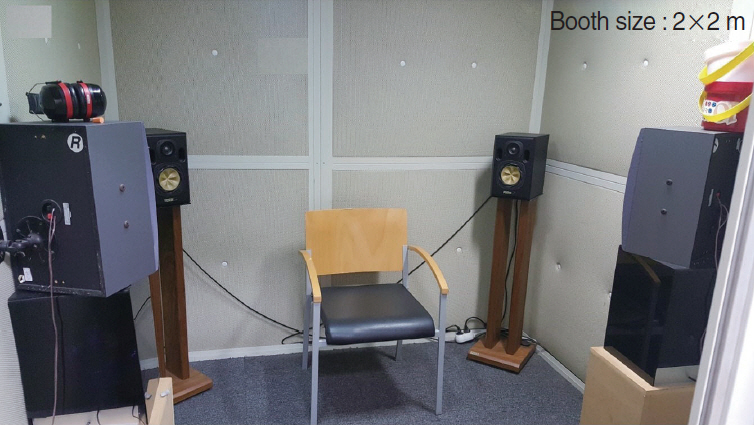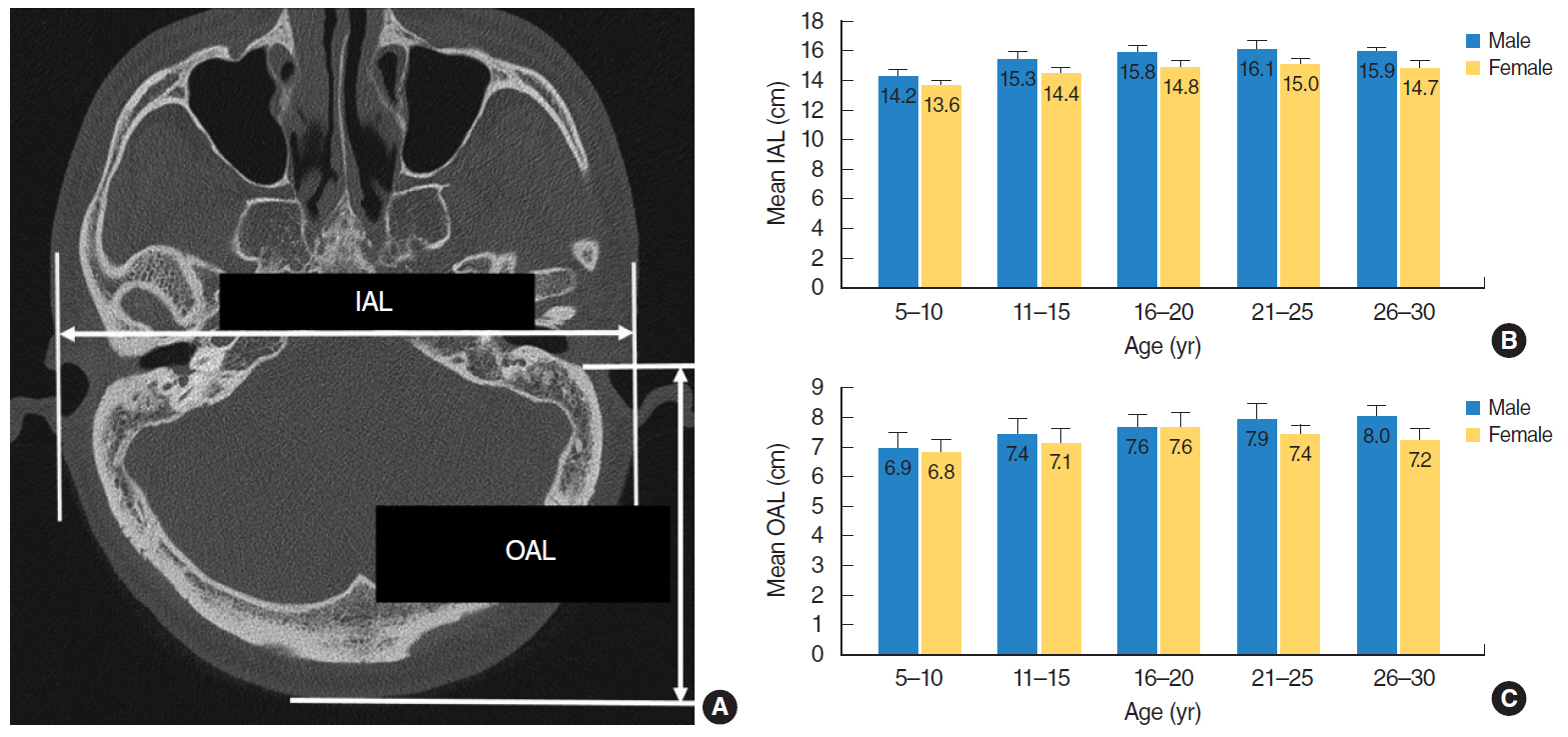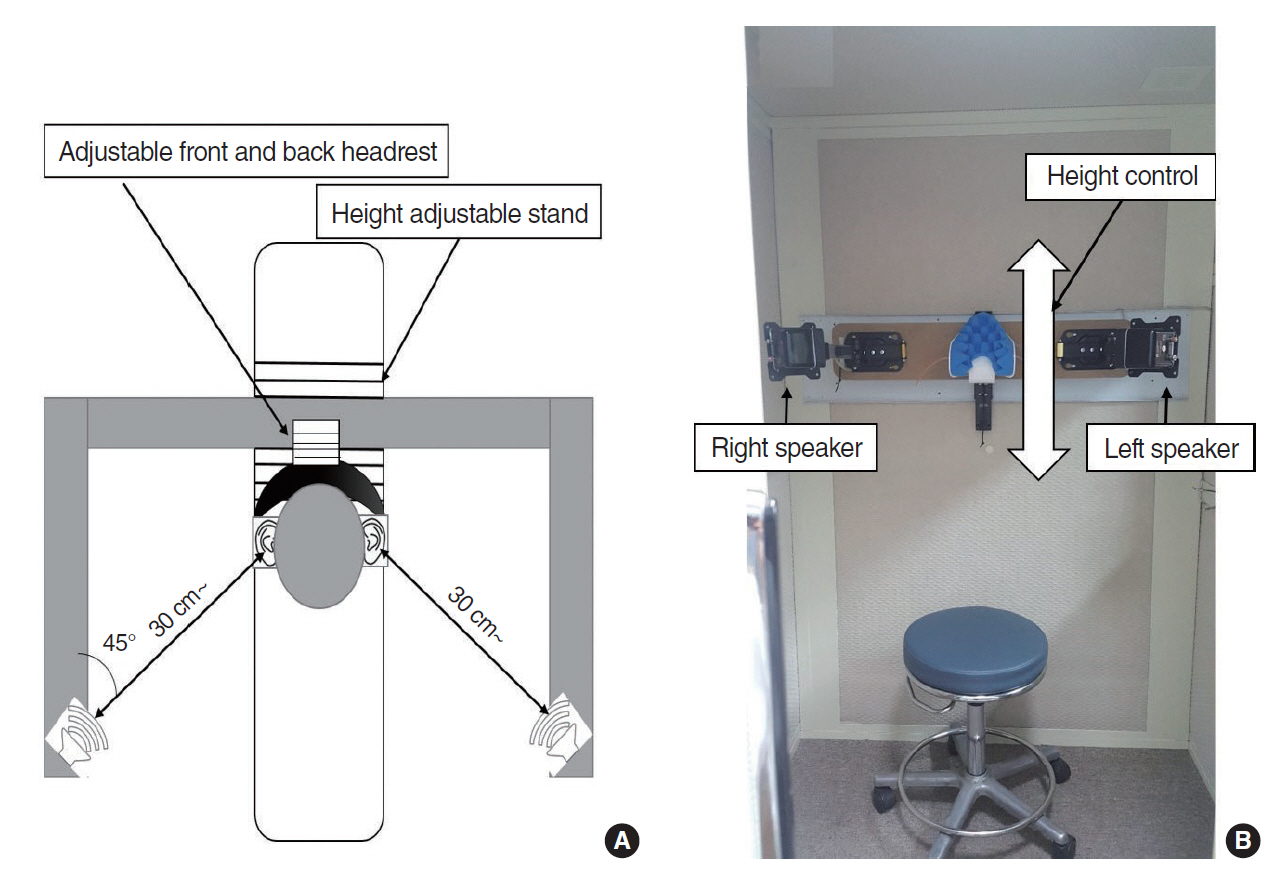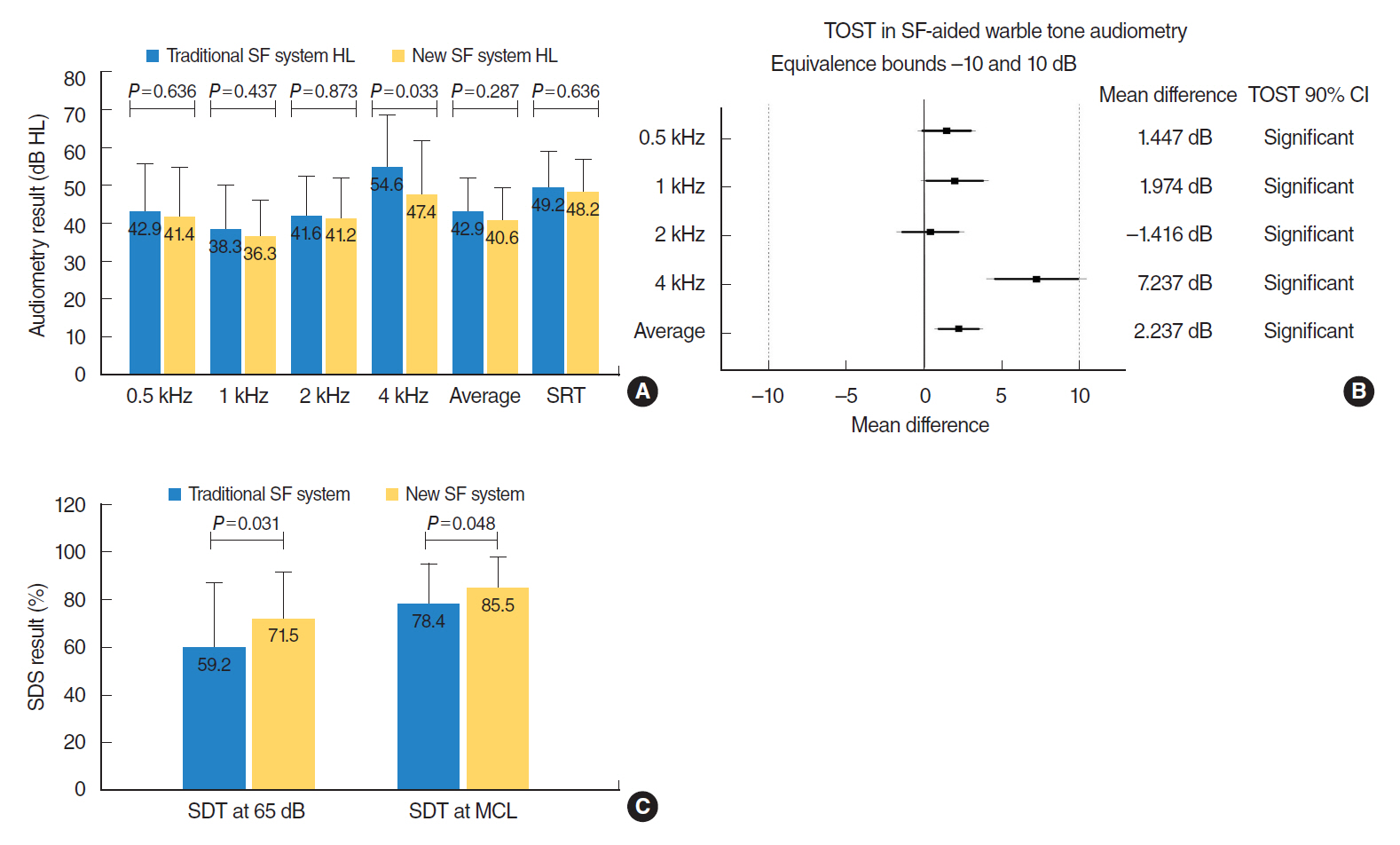Clin Exp Otorhinolaryngol.
2020 Feb;13(1):29-35. 10.21053/ceo.2019.00577.
Development of Sound Field Audiometry System for Small Audiometric Booths and Comparison of Its Equivalence With Traditional System
- Affiliations
-
- 1Department of Otolaryngology-Head and Neck Surgery, Chonnam National University Hospital, Gwangju, Korea
- 2Department of Otolaryngology-Head and Neck Surgery, Chonnam National University Medical School, Gwangju, Korea
- KMID: 2501294
- DOI: http://doi.org/10.21053/ceo.2019.00577
Abstract
Objectives
. Sound field (SF) audiometry tests are usually conducted in audiometric booths measuring greater than 2×2 m in size. However, most private ENT clinics carry about 1×1-m-sized audiometric booths, making SF audiometry testing difficult to perform. The aims of this study were to develop an SF audiometry system for use in smaller audiometric booths and compare its performance with traditional system.
Methods
. The newly developed SF audiometry system can yield an SF signal at a distance of about 30 cm from the subject’s ears. Its height can be adjusted according to the subject’s head height. We compared SF hearing results between the new SF system and the traditional SF audiometry system in 20 adults with normal hearing (40 ears) and 24 adults with impaired hearing levels (38 ears) who wore hearing aids. Comparative parameters included warble tone audiometry threshold, a speech reception threshold (SRT), and a speech discrimination score (SDS). For statistical analysis, paired t-test was used. The equivalence of both SF systems was tested using two one-sided test (TOST) with a margin of 5 dB (normal hearing participants) and 10 dB (hearing aids wearing participants).
Results
. Among participants with normal hearing, warble tone hearing thresholds of 0.5, 1, 2, and 4 kHz, average values of these four frequencies, and SRT were similar between the two systems (all P>0.05). Participants with hearing aids showed similar warble tone threshold and SRT (P>0.05) in both systems except for threshold of 4 kHz (P=0.033). SDS was significantly higher in the newly developed system (P<0.05). TOST results showed equivalent SF audiometry results using either system.
Conclusion
. Audiometric results of the newly developed SF audiometry system were equivalent to those of a traditional system. Therefore, the small SF audiometry system can be used at small audiometric booths present in most private ENT clinics.
Keyword
Figure
Reference
-
1. Goman AM, Lin FR. Prevalence of hearing loss by severity in the United States. Am J Public Health. 2016; Oct. 106(10):1820–2.
Article2. Jun HJ, Hwang SY, Lee SH, Lee JE, Song JJ, Chae S. The prevalence of hearing loss in South Korea: data from a population-based study. Laryngoscope. 2015; Mar. 125(3):690–4.
Article3. Walker G, Dillon H, Byrne D. Sound field audiometry: recommended stimuli and procedures. Ear Hear. 1984; Jan-Feb. 5(1):13–21.4. Oh SH, Lee J. General framework of hearing aid fitting management. J Audiol Otol. 2016; Apr. 20(1):1–7.
Article5. KOSIS. Korean body size survey [Internet]. Daejeon, KR: KOSIS;2018 [cited 2019 Jul 8]. Available from: http://kosis.kr/statHtml/statHtml.do?orgId=115&tblId=TX_115190170.6. Valente M, Valente M, Goebel J. Reliability and intersubject variability of the real ear unaided response. Ear Hear. 1991; Jun. 12(3):216–20.
Article7. Valente M, Meister M, Smith P, Goebel J. Intratester test-retest reliability of insertion gain measures. Ear Hear. 1990; Jun. 11(3):181–4.
Article8. Hawkins DB, Montgomery AA, Prosek RA, Walden BE. Examination of two issues concerning functional gain measurements. J Speech Hear Disord. 1987; Feb. 52(1):56–63.
Article9. Cho YS. Management of hearing aids clinic. Korean J Otorhinolaryngol Head Neck Surg. 2010; 53(6):333–9.
Article10. Humes LE, Kirn EU. The reliability of functional gain. J Speech Hear Disord. 1990; May. 55(2):193–7.
Article11. Rochlin GD. Status of sound field audiometry among audiologists in the United States. J Am Acad Audiol. 1993; Mar. 4(2):59–68.12. Dirks DD, Stream RW, Wilson RH. Speech audiometry: earphone and sound field. J Speech Hear Disord. 1972; May. 37(2):162–76.
Article13. International Organization for Standardization. Acoustics: audiometric test methods. Part 2: sound field audiometry with pure-tone and narrow-band test signals (ISO 8253-2:2009). Geneva: International Organization for Standardization;2009.14. International Organization for Standardization. Reference threshold of hearing at 20 Hz and 18 000 Hz under free-field listening conditions and at 20 Hz under diffuse-field listening conditions (ISO 389-7:2005/Amd 1:2016). Geneva: International Organization for Standardization;2016.
- Full Text Links
- Actions
-
Cited
- CITED
-
- Close
- Share
- Similar articles
-
- Current Medical Exantination Practiees for the Determination of Occupational Noise Induced Hearing Losses
- Clinical Importance of Sound-Field Speech Recognition Test for Measurement of Hearing Aid Benefit
- Are We Truly Safe? Unfolding the Final Chapters of COVID-19 Walk-Through Booths
- Ambient Noise Levels in the Audiometric Test Rooms Used for Special Periodic Health Examination
- Improving the Accuracy of Baha(R) Fittings through Measures of Direct Bone Conduction






